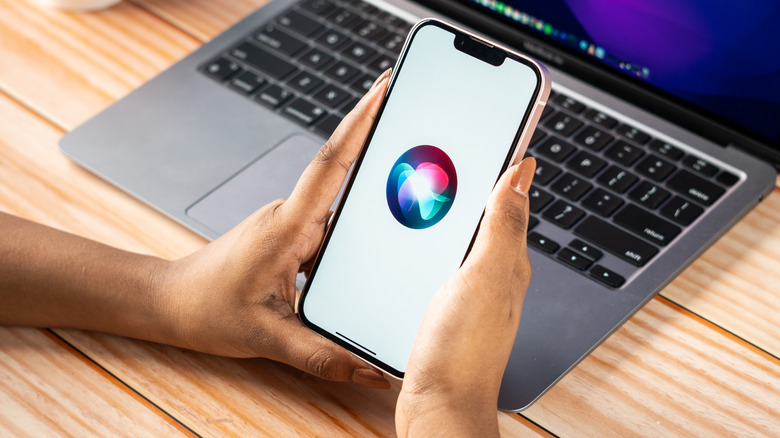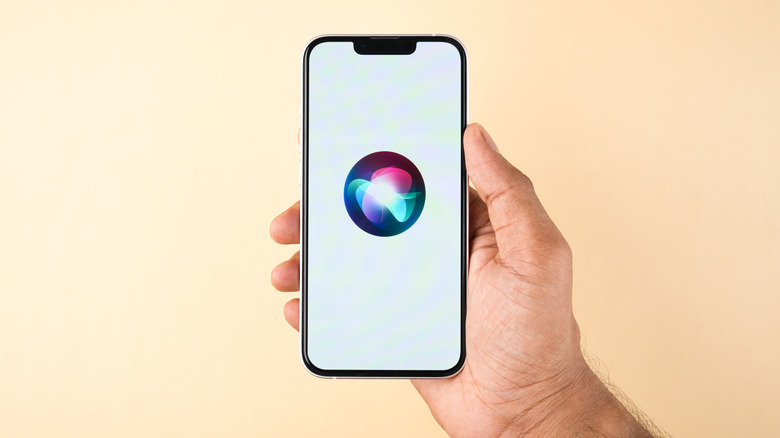Here's How Apple Came Up With The Name 'Siri'
Most of us barely think twice before summoning Siri, whether it's to set an alarm, send a text, or settle an argument with a quick fact check. The name has become so familiar, so tightly woven into Apple's ecosystem, that it's easy to forget it wasn't always inevitable.
There was a time the virtual assistant's very name, the same one that rolls off the tongue without a second thought, was in debate. In fact, it nearly didn't make it to launch. Long before it echoed in millions of living rooms and pockets, Siri was just one option among many — one that Steve Jobs famously disliked — as Apple contemplated what to call its new virtual assistant.
Another fact worthy of your next trivia night: Apple did not come up with the name Siri, nor was Siri originally built for the iPhone, surprising as that may sound. The story behind Apple's resident concierge involves a startup acquisition, a Norwegian name with a hidden meaning, and some last-minute decisions that could have rewritten tech history. Here's how Apple landed on a name that now needs no introduction.
Hey Siri, how did you get your name?
Before Siri became Apple's in-house voice assistant, it was the brainchild of a scrappy startup spun out of years of stealth research at the Stanford Research Institute (SRI). The technology has roots in a 2003 U.S. Defense-funded initiative called CALO (Cognitive Assistant that Learns and Organizes). Co-founders Dag Kittlaus, Tom Gruber, and Adam Cheyer created Siri Inc. in 2007 to bring that tech to the public, and Siri was launched as an iOS app in February 2010.
This was the team that christened Siri. According to Cheyer, the goal was simple: pick something short, memorable, plus easy to spell and pronounce. Siri checked all the boxes. There were also more sentimental reasons for the choice of name. Kittlaus, the startup's Norwegian-American CEO, once worked with someone named Siri and loved the Norse meaning — "beautiful woman who will lead you to victory." He had even planned to name his daughter Siri, before finding out he was having a son. The idea went on the shelf until this project gave it new life. Cheyer liked it for a different reason. In Swahili, "siri" means "secret," so it was a playful nod to their early stealth phase, when they operated anonymously under stealth-company.com. And of course, the name Siri bore a resemblance to SRI, the lab where it all began.
How Apple got involved
Siri (the app) spent all of two weeks on the App Store before it caught Steve Jobs' interest, which was no small feat considering how famously selective Apple is about what it brings under its wing. But the app delivered something Apple had been chasing since 1987: a working version of the intelligent assistant it once imagined in its "Knowledge Navigator" concept video.
According to cofounder Dag Kittlaus, Jobs felt the startup had "cracked it," and that was the draw. At first, the Siri team hesitated. The app was gaining traction, and there was already a deal in the works to bring it to Android via Verizon. However, the chance to scale with Apple proved more compelling. By April 2010, Apple had acquired Siri for a reported $200 million, which promptly ended any plans for cross-platform expansion and gave Apple full control of the tech.
Apple gave the tech a facelift ahead of its 2011 launch on the iPhone 4s: Siri got a voice (or voices, more aptly) — an upgrade from its text-only roots — and it was deeply integrated into iOS, allowing it to interact with apps and handle tasks. The name, though, almost didn't make it. Jobs wasn't a fan, and Kittlaus had to lobby hard to keep it. In the end, Apple kept with the name because they didn't come up with anything better. These days, it's hard to imagine the Apple ecosystem without Siri, though the version we know today has come a long way from where it started.


